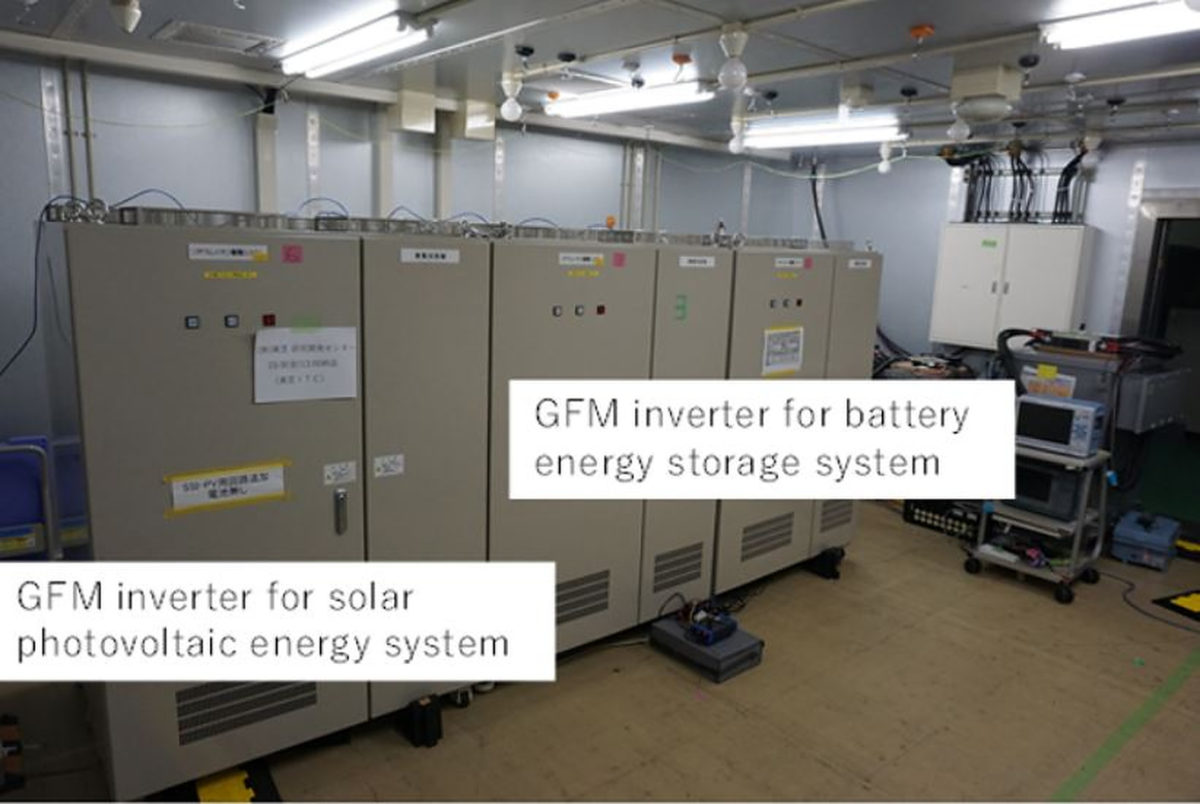Toshiba has developed a grid-forming (GFM) inverter for applications in microgrids.
The Japanese industrial group said the new inverter can maintain the grid frequency of distribution systems by providing pseudo-inertia through power output from the inverter when the grid frequency rapidly fluctuates.
“Toshiba has implemented a control algorithm of the grid-forming inverter in battery energy storage systems instead of conventional control algorithm without inertia, and when there are rapid fluctuations in renewable energy output or power demands, the inverter outputs power and generates a synthetic inertia to maintain the grid frequency,” the company said in a statement. “This instantly suppresses sudden drops in frequency, realizing a stable power supply.”
Toshiba tested the inverter in a simulated microgrid with a grid frequency of 50 Hz, a 40% renewable energy rate, and five 20 kW/14.9 kWh batteries. The system also featured a diesel synchronous generator with a capacity of 125 kVA, and two load banks to vary the power load.
“It was demonstrated that under load fluctuations of 50 kW, grid frequency reductions were suppressed by 70%, from 2.4 Hz (50.0 to 47.6 Hz) to 0.6 Hz (50.0 Hz to 49.4 Hz),” the company said, in reference to the test results. “The frequency threshold for power supply interruptions due to grid frequency fluctuations in East Japan is set at 48.5 Hz, and verifications using actual equipment ensured that the frequency did not fall below this threshold, demonstrating the realization of a stable power supply that avoids power outages.”
The company conducted a second test on a 20 kW PV system without batteries, and found that the grid frequency was suppressed by approximately 30%, from 1 Hz (50.0 to 49.0 Hz) to 0.7 Hz (50.0 to 49.3 Hz).
“Toshiba also verified that instantaneous load on the GFM inverter can be reduced by 30%, from 22 to 16 kW, by selecting an inertia suitable for parallel operation of synchronous generators with internal combustion engines, like those expected to be used in a microgrid,” it said.
The company said it plans to reveal the results at the Annual Conference of the Power and Energy Society of the Institute of Electrical Engineers of Japan in September. It will also discuss its findings at the 2022 IEEE Energy Conversion Congress and Exposition (ECCE2022) in October.
This content is protected by copyright and may not be reused. If you want to cooperate with us and would like to reuse some of our content, please contact: editors@pv-magazine.com.




2 comments
By submitting this form you agree to pv magazine using your data for the purposes of publishing your comment.
Your personal data will only be disclosed or otherwise transmitted to third parties for the purposes of spam filtering or if this is necessary for technical maintenance of the website. Any other transfer to third parties will not take place unless this is justified on the basis of applicable data protection regulations or if pv magazine is legally obliged to do so.
You may revoke this consent at any time with effect for the future, in which case your personal data will be deleted immediately. Otherwise, your data will be deleted if pv magazine has processed your request or the purpose of data storage is fulfilled.
Further information on data privacy can be found in our Data Protection Policy.